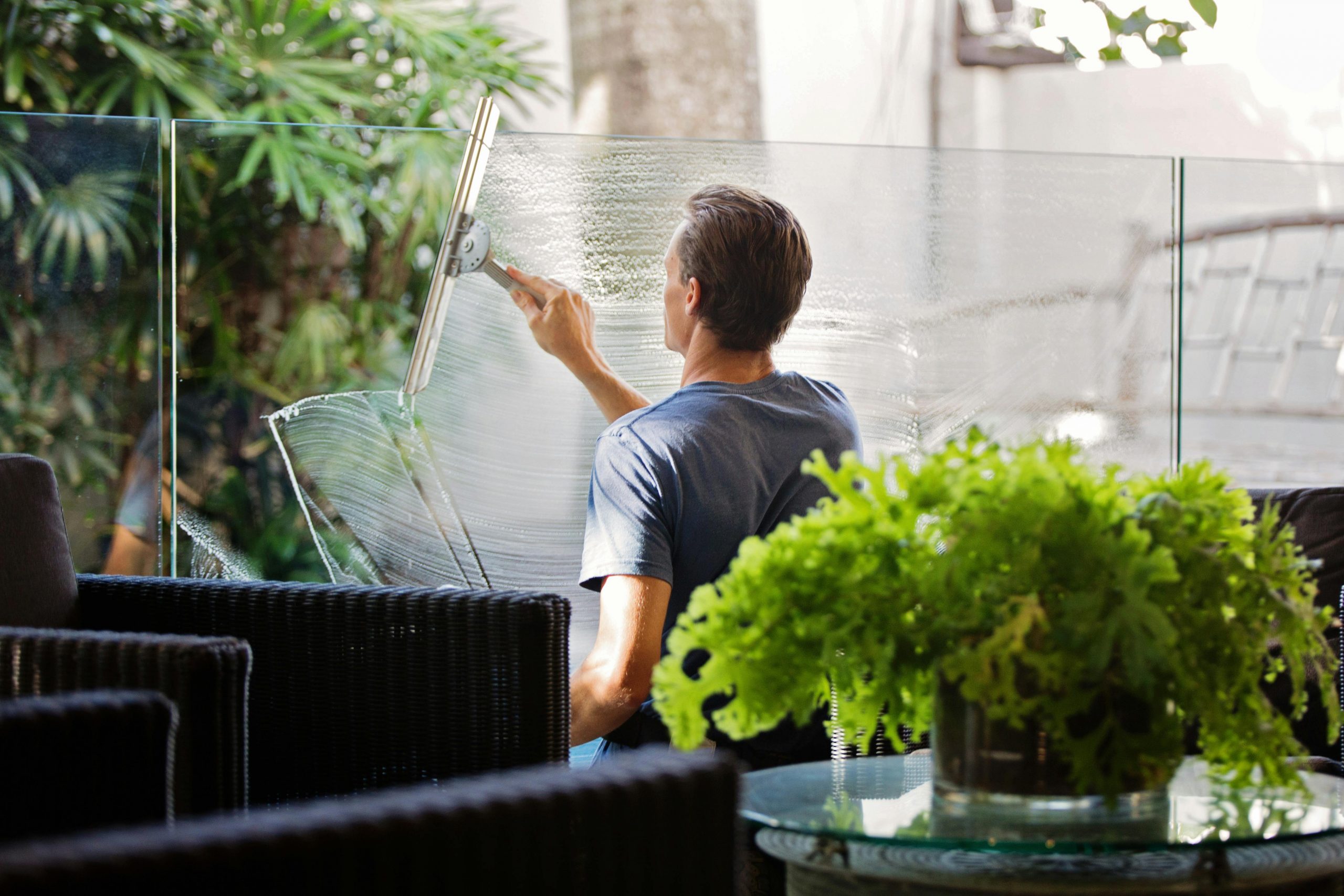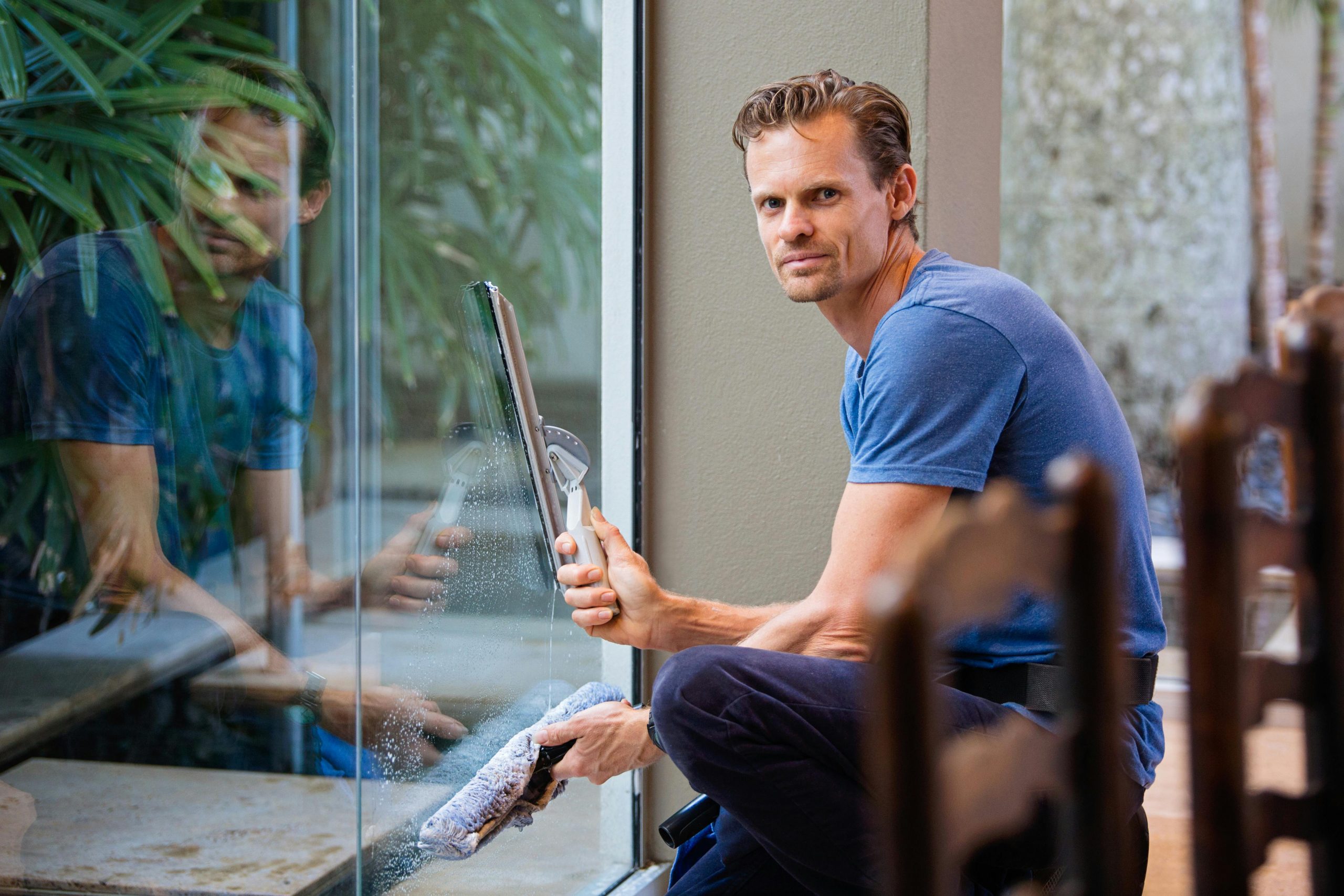How to Clean Outdoor Furniture: A Complete Guide for Every Material

Outdoor furniture adds comfort and style to patios, decks, and gardens—but it’s constantly exposed to sun, rain, dust, and pollen. Over time, grime and mildew can build up, making your once-beautiful pieces look dull and worn. The good news? With the right cleaning techniques and products, you can restore your outdoor furniture to like-new condition and extend its lifespan.
This guide walks you through how to clean outdoor furniture by material—wood, metal, plastic, wicker, and fabric—and offers preventive care tips to keep it looking great season after season.
Step 1: Gather Your Cleaning Supplies

Before you begin, collect the right materials. Having everything ready will make the job faster and prevent accidental damage from using the wrong products.
You’ll need:
- Mild dish soap or a gentle multipurpose cleaner
- Warm water
- Soft-bristle brush or sponge
- Microfiber cloths
- Garden hose or bucket
- White vinegar (for mildew and mold)
- Baking soda (for tough stains)
- Protective gloves
- Furniture covers or sealants (optional for long-term care)
Pro Tip: Always test a new cleaning solution on a small, hidden area first to make sure it won’t damage the finish.
Step 2: Cleaning Wood Outdoor Furniture
Wood furniture gives your patio a natural, timeless look, but it’s prone to fading, mildew, and water stains if not properly maintained.
How to Clean Wood Furniture
- Remove Dust and Debris: Wipe the surface with a dry cloth to remove dirt, leaves, and cobwebs.
- Prepare a Cleaning Solution: Mix a few drops of mild dish soap in warm water. Avoid bleach or ammonia-based cleaners, which can strip natural oils.
- Scrub Gently: Dip a soft brush or sponge into the solution and scrub along the wood grain.
- Rinse and Dry: Rinse thoroughly with clean water and wipe dry with a microfiber cloth. Let the furniture air dry completely in the shade.
- Reapply Sealant (Optional): Once dry, apply a weatherproof sealant or wood oil to protect it from moisture and UV rays.
Extra Tip: For mildew spots, mix equal parts white vinegar and water, apply with a sponge, and rinse thoroughly.
Step 3: Cleaning Metal Outdoor Furniture
Metal furniture—whether aluminum, steel, or wrought iron—is durable but can rust or corrode if left untreated.
How to Clean Metal Furniture
- Remove Loose Dirt: Use a soft brush or cloth to wipe away dirt and debris.
- Mix Cleaning Solution: Combine warm water and mild dish soap.
- Scrub the Surface: Use a sponge or soft brush to scrub away grime, focusing on crevices where dirt collects.
- Rinse and Dry: Rinse with a garden hose and dry thoroughly to prevent rust spots.
- Protect the Finish:
- Apply car wax or a rust-resistant spray for added protection.
- Touch up chipped paint immediately with rust-resistant enamel.
Pro Tip: For stubborn rust, create a paste of baking soda and water, apply it to rusty spots, let it sit for 30 minutes, then scrub gently.
Step 4: Cleaning Plastic and Resin Outdoor Furniture
Plastic and resin furniture are low-maintenance and weather-resistant but can discolor or develop mold in humid conditions.
How to Clean Plastic Furniture
- Rinse First: Hose down to remove loose dirt and debris.
- Use a Gentle Cleaner: Mix ¼ cup of mild dish soap in a gallon of warm water.
- Scrub with a Soft Brush: Scrub in circular motions to lift dirt and stains.
- Rinse and Dry: Rinse thoroughly and dry with a clean towel.
- Restore Shine (Optional): Apply a mixture of vinegar and water or a plastic polish to bring back the shine.
Avoid: Abrasive scrubbers or bleach, which can scratch or weaken the plastic surface.
Step 5: Cleaning Wicker Outdoor Furniture
Wicker furniture—natural or synthetic—adds a classic touch to patios but can collect dust and mildew in the woven crevices.
How to Clean Wicker Furniture
- Dust First: Use a vacuum with a brush attachment or a dry paintbrush to remove loose dirt.
- Wash Gently: Mix a small amount of dish soap in warm water and use a soft cloth or sponge to clean the surface.
- Rinse Carefully: Avoid over-soaking natural wicker. Use a damp cloth instead of a hose.
- Dry Completely: Allow the furniture to dry in the shade. Avoid direct sunlight, which can cause cracking.
Pro Tip: Apply a thin coat of furniture wax to natural wicker to help repel moisture and maintain its natural shine.
Step 6: Cleaning Outdoor Cushions & Fabrics
Outdoor cushions can trap dirt, pollen, and mildew, especially after rain or humid weather. Keeping them fresh not only improves appearance but also prevents odor and mold.
How to Clean Outdoor Cushions
- Check Tags: Look for cleaning instructions on the label before washing.
- Remove Loose Debris: Shake off dust and vacuum the surface.
- Spot Clean Stains: Mix 1 teaspoon of dish soap and 1 tablespoon of borax in a quart of warm water. Apply to stains and let sit for 10 minutes.
- Scrub & Rinse: Use a soft brush, then rinse thoroughly with a hose.
- Dry Completely: Let cushions air dry upright in the sun to prevent mildew growth.
For Mold or Mildew: Mix equal parts white vinegar and water in a spray bottle, apply to affected areas, and rinse after 15 minutes.
Step 7: How to Remove Common Outdoor Furniture Stains
Different stains require targeted cleaning methods. Here’s how to deal with some of the most common ones:
| Stain Type | Cleaning Solution | How to Apply |
| Tree Sap | Rub with rubbing alcohol | Use a cloth and rinse afterward |
| Rust | Baking soda paste | Apply, let sit 30 mins, scrub gently |
| Mildew | White vinegar + water | Spray, scrub, rinse thoroughly |
| Grease | Dish soap + warm water | Scrub, rinse, dry completely |
Pro Tip: Always rinse thoroughly after treating stains to prevent residue buildup.
Step 8: Seasonal Deep Cleaning Tips

Outdoor furniture weathers sun, rain, wind, and even temperature changes year-round. While regular wipe-downs keep your pieces looking fresh, seasonal deep cleaning ensures long-term protection and helps prevent fading, rust, and mold growth. Setting aside time twice a year—usually in spring and fall—keeps your patio setup ready for any season.
Spring Cleaning
After months of cold or rainy weather, your furniture likely has collected dust, grime, or even mildew. A proper spring refresh gets everything clean and ready for warm-weather use.
Here’s how to prepare your furniture for spring:
- Remove Covers and Inspect for Damage: Check for cracks, rust, or mildew that may have formed during winter storage.
- Clean Thoroughly: Wash every surface using a mild soap solution and rinse well. For cushions, vacuum or hand wash the fabric to remove dirt and allergens.
- Tighten and Repair: Tighten loose screws and bolts, fix small cracks in wood or resin, and sand away any rust spots before they spread.
- Reapply Protective Coatings: Refresh wood sealant, apply a UV-protective spray on plastic or metal, and use fabric protectant on cushions to repel moisture and stains.
- Let Everything Dry Completely: Before placing cushions or covers back, ensure every piece is fully dry to prevent mold and musty smells.
Pro Tip: Use this opportunity to rearrange or redecorate your outdoor space. A new layout or a few accent pieces can make your patio feel brand new without buying new furniture.
Fall Cleaning
When the outdoor season winds down, a deep clean before storage keeps furniture from deteriorating during the off-season. This step also ensures that your pieces are ready to use as soon as warm weather returns.
Here’s what to do in the fall:
- Wash & Rinse Thoroughly: Remove dirt, pollen, and sunscreen residue that can degrade finishes over time.
- Dry Completely: Moisture trapped in cushions or joints can lead to mold or rust during storage. Always air-dry items in a shaded, well-ventilated area.
- Apply Rust-Resistant or UV-Protective Coatings: A protective finish prevents corrosion and fading during colder months.
- Store Cushions Indoors: Keep them in a dry, temperature-controlled place or waterproof storage bins to prevent mildew and pest damage.
- Cover or Store Furniture: Use breathable, waterproof covers to shield furniture from rain and snow. If possible, move lightweight items like plastic chairs or small tables into a shed or garage.
- Elevate Off the Ground: If storing outdoors, place furniture on pallets or pavers to prevent moisture absorption from the ground.
Pro Tip: Avoid using plastic tarps directly on wood furniture—moisture can get trapped underneath and cause mildew or warping. Opt for covers designed specifically for outdoor use with ventilation flaps.
By following these seasonal deep cleaning steps, you’ll extend the lifespan of your outdoor furniture and keep it looking as inviting as the day you bought it. Regular upkeep not only protects your investment but also ensures your outdoor space stays comfortable, clean, and ready to enjoy year-round.
Step 9: Long-Term Protection and Maintenance
Proper maintenance extends the lifespan of your outdoor furniture. Consistency is key to keeping it looking its best.
Maintenance Tips:
- Cover furniture during rain or when not in use.
- Store indoors during extreme weather.
- Use furniture pads to prevent scratches on hard surfaces.
- Reapply protective finishes annually for wood and metal furniture.
- Regularly check for loose screws, rust, or cracks.
Eco-Friendly Cleaning Alternatives
If you prefer natural cleaning products, you can keep your patio eco-friendly without sacrificing results.
Green Cleaning Options:
- Vinegar and Water: Great for general cleaning and mold removal.
- Baking Soda Paste: Works well for tough stains and deodorizing.
- Lemon Juice: Natural bleaching agent for plastic and light-colored furniture.
- Castile Soap: Gentle yet effective for all materials.
Bonus Tip: Avoid cleaners with phosphates or chlorine, as they can harm plants and soil around your patio.
Common Mistakes to Avoid
When cleaning outdoor furniture, a few common errors can cause damage or shorten the furniture’s life.
Avoid:
- Using pressure washers on wood or wicker.
- Leaving soap residue behind (it attracts dirt).
- Cleaning in direct sunlight (causes streaks and fading).
- Using steel wool or abrasive brushes.
- Forgetting to dry furniture completely before covering it.
Conclusion
Outdoor furniture endures constant exposure to the elements—but with regular care and the right cleaning techniques, you can keep it looking beautiful for years.
By learning how to clean outdoor furniture by material, using gentle solutions, and practicing proper maintenance, you’ll protect your investment and enjoy a cleaner, more comfortable outdoor space.
Take a few hours each season to clean, inspect, and protect your patio pieces—you’ll be rewarded with furniture that looks brand-new every time you step outside.
